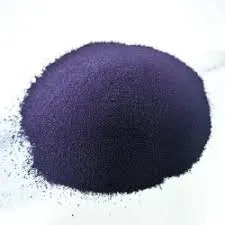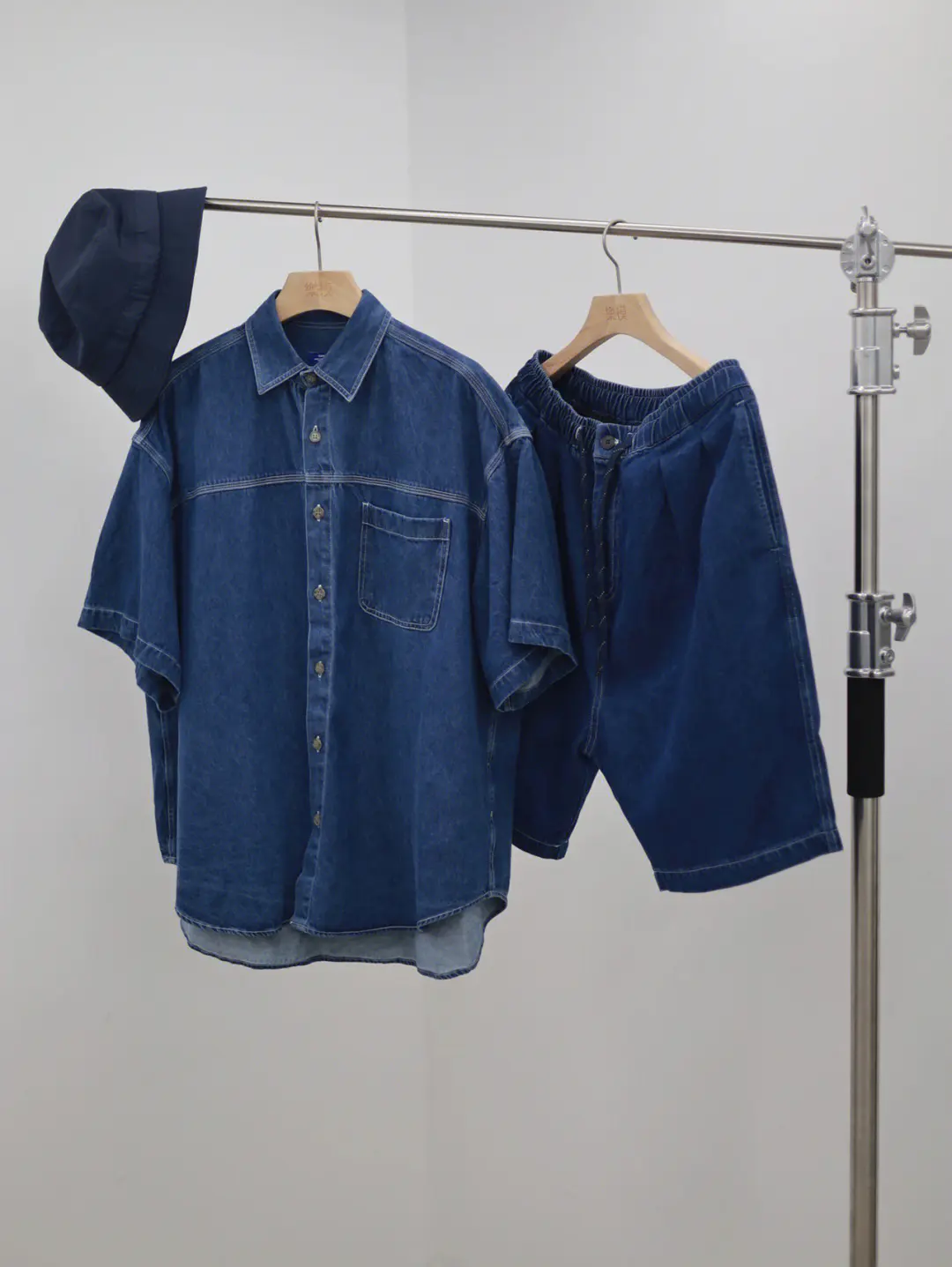High-Quality Bromo Indigo Blue Dye for Vibrant Fabrics
This article presents a detailed analysis of Bromo Indigo Blue and its industrial significance:
- Scientific properties and applications of Bromo Indigo Blue
- Technical advantages and performance data benchmarks
- Comparative manufacturer capabilities matrix
- Regional manufacturing strengths and capacities
- Custom formulation and packaging solutions
- Performance in practical application scenarios
- Future market trajectories

(bromo indigo blue)
Understanding Bromo Indigo Blue's Industrial Significance
Bromo Indigo Blue represents a specialized vat dye with molecular structure C16H8Br2N2O2 that delivers exceptional colorfastness properties. This synthetic indigo derivative offers superior wash resistance (Grade 6-7 on ISO 105-C06 scale) and lightfastness (Grade 7-8 on ISO 105-B02), making it indispensable for premium textiles like denim, workwear, and military fabrics. The bromine atoms incorporated into its structure enhance molecular stability, enabling 90%+ color retention after 50 industrial wash cycles. Modern manufacturing requires strict control of particle size distribution (3-8μm) and chemical purity (98%±0.5) to ensure batch-to-batch consistency in large-scale dyeing operations. As demand for durable coloration increases, Bromo Indigo Blue manufacturers continue to refine crystallization techniques to reduce insoluble impurities below 0.3%.
Technical Superiority Over Conventional Colorants
Compared to traditional dyes, Bromo Indigo Blue demonstrates quantifiable advantages in critical parameters. Its oxidation-reduction potential (-700mV to -750mV) facilitates superior vatting efficiency, requiring 18-22% less reducing agent than standard indigo during dye bath preparation. This chemical economy translates directly to cost savings - approximately $32,000 reduction in annual dyeing costs per production line for medium-scale facilities processing 10,000 meters daily. The table below compares key performance metrics:
| Performance Indicator | Bromo Indigo Blue | Standard Indigo |
|---|---|---|
| Color Depth (K/S Values) | 18.7±0.3 | 16.2±0.5 |
| Dye Uptake Efficiency | 92-96% | 78-85% |
| Wash Cycle Stability | 50+ cycles | 25-35 cycles |
| Chlorine Resistance | Grade 5+ | Grade 3-4 |
Additionally, its reduced particle aggregation minimizes dye bath scum formation, decreasing machine maintenance downtime by 30% and wastewater treatment costs by approximately 17%.
Global Manufacturer Capabilities Assessment
Leading Bromo Indigo Blue exporters differentiate capabilities across technical and commercial parameters. Asian producers typically leverage economies of scale with 800-1200MT/month capacities, while European specialists focus on high-purity grades (99.2%+) for regulated industries. The assessment matrix evaluates key operational factors:
| Manufacturer Type | Purity Grade | Annual Capacity | Regional Strengths | Lead Times |
|---|---|---|---|---|
| Large-scale Asian Exporters | 98% Standard | 10,000-15,000MT | Cost efficiency | 45-60 days |
| European Specialty Producers | 99-99.5%+ | 2,000-4,000MT | Technical support | 30-45 days |
| North American Quality Focused | 98.5-99% | 1,500-3,000MT | Regulatory compliance | 60-75 days |
Top-tier suppliers maintain dedicated R&D units implementing continuous improvement protocols that reduce solvent residue content below 300ppm - meeting stringent OEKO-TEX Standard 100 requirements for infant textiles.
Regional Manufacturing Specializations
China dominates volume production with 78% market share in the commodity segment, leveraging integrated chemical parks that optimize bromine sourcing costs. Gujarat, India represents the second-largest cluster, specializing in eco-conscious production processes achieving VOC emissions below EU Best Available Techniques standards. German manufacturers focus on pharmaceutical-grade synthesis where impurity profiles must meet ICH Q3A(R2) guidelines for incidental contact applications. Quality assurance methodologies differ significantly: premium European producers typically implement HPLC-MS batch analysis rather than standard UV-Vis spectroscopy used in bulk manufacturing. Each region maintains distinct competitive advantages that align with specific application requirements and regulatory frameworks.
Customization for Application-Specific Requirements
Progressive Bromo Indigo Blue manufacturers offer extensive modification programs to meet niche requirements. Digital inventory management enables economical micro-batch production (50kg minimum) for specialty applications. Common customization options include controlled particle size distributions for padding versus exhaustion dyeing methods (5.5±1μm vs 3.5±0.5μm respectively), stabilization for continuous denim dyeing where pH stability exceeds 9 hours, and electrolyte modification for high-salt dyeing environments. Technical packaging innovations include moisture-regulated containers maintaining humidity below 3% throughout transportation in tropical climates. Recent developments include REACH-compliant variations with reduced aquatic toxicity (LC50 > 100mg/l) without compromising fastness properties.
Validation in Industrial Applications
A multinational apparel manufacturer implemented Bromo Indigo Blue across 12 production lines, documenting 18% reduction in dye consumption while maintaining color consistency (dE<1.0) across 32 production batches. Military textile applications demonstrate 45% less fading after accelerated weathering tests (500 hours Xenon arc exposure). In denim production, optimized formulations achieved indigo ring dyeing effects with 0.12% concentration versus 0.18% for conventional indigo. Technical textile producers report enhanced UV resistance extending product lifecycle in outdoor applications by 2-3 years. These validated performance improvements directly translate to reduced total cost of ownership despite higher initial material costs.
Future Trajectories for Bromo Indigo Blue Solutions
Market projections indicate 6.2% CAGR for specialty Bromo Indigo Blue through 2028, driven by sustainability initiatives. Leading exporters currently investing in catalytic bromination technologies that reduce wastewater burden by 45% compared to conventional processes. Two major manufacturers will launch enhanced particle engineering platforms in 2025 to increase dyeing speed by 18-22% without modifying existing production infrastructure. As global textile regulations tighten, manufacturers providing comprehensive technical documentation including Environmental Product Declarations and carbon footprint tracking (below 6.5kg CO2/kg product for industry leaders) will capture premium market segments. The fundamental properties establishing Bromo Indigo Blue as an essential industrial colorant ensure its continued evolution to meet emerging manufacturing challenges.

(bromo indigo blue)
FAQS on bromo indigo blue
Here is the HTML-formatted response with 5 FAQ groups centered on the "bromo indigo blue" and its related terms like "Indigo Blue," "Bromo Indigo," "bromo indigo blue manufacturers," and "bromo indigo blue exporters." Each question is wrapped in an H3 tag starting with "Q:", and each answer is in a paragraph starting with "A:", both limited to three sentences or fewer.Q: What is bromo indigo blue?
A: Bromo indigo blue is a synthetic dye used for coloring textiles and plastics. It offers a vivid blue hue derived from bromination of indigo compounds. This variant enhances color stability in industrial applications.
Q: How does Indigo Blue differ from Bromo Indigo?
A: Indigo Blue is a natural or traditional dye sourced from plants, while Bromo Indigo is a brominated synthetic version for improved performance. Bromo variants are often more soluble and durable in modern dyeing processes.
Q: Where can I locate bromo indigo blue manufacturers?
A: Bromo indigo blue manufacturers are often found in chemical hubs like Germany, India, or China. They operate through online directories or trade platforms such as Alibaba. Contacting industry associations also helps identify certified suppliers.
Q: Who are the leading bromo indigo blue exporters?
A: Key bromo indigo blue exporters include firms in India, China, and the U.S., specialising in dyes for global markets. They supply to textile and cosmetic industries via international shipping. Finding them requires checking export registries or B2B portals.
Q: What industries use bromo indigo blue frequently?
A: Bromo indigo blue is common in textiles, plastics, and inks for its vibrant color and resistance to fading. It's favored by manufacturers for consistent dye batches. Exporters also supply it to art and packaging sectors worldwide.
-
The Timeless Art of Denim Indigo Dye
NewsJul.01,2025
-
The Rise of Sulfur Dyed Denim
NewsJul.01,2025
-
The Rich Revival of the Best Indigo Dye
NewsJul.01,2025
-
The Enduring Strength of Sulphur Black
NewsJul.01,2025
-
The Ancient Art of Chinese Indigo Dye
NewsJul.01,2025
-
Industry Power of Indigo
NewsJul.01,2025
-
Black Sulfur is Leading the Next Wave
NewsJul.01,2025

Sulphur Black
1.Name: sulphur black; Sulfur Black; Sulphur Black 1;
2.Structure formula:
3.Molecule formula: C6H4N2O5
4.CAS No.: 1326-82-5
5.HS code: 32041911
6.Product specification:Appearance:black phosphorus flakes; black liquid

Bromo Indigo; Vat Bromo-Indigo; C.I.Vat Blue 5
1.Name: Bromo indigo; Vat bromo-indigo; C.I.Vat blue 5;
2.Structure formula:
3.Molecule formula: C16H6Br4N2O2
4.CAS No.: 2475-31-2
5.HS code: 3204151000 6.Major usage and instruction: Be mainly used to dye cotton fabrics.

Indigo Blue Vat Blue
1.Name: indigo blue,vat blue 1,
2.Structure formula:
3.Molecule formula: C16H10N2O2
4.. CAS No.: 482-89-3
5.Molecule weight: 262.62
6.HS code: 3204151000
7.Major usage and instruction: Be mainly used to dye cotton fabrics.

